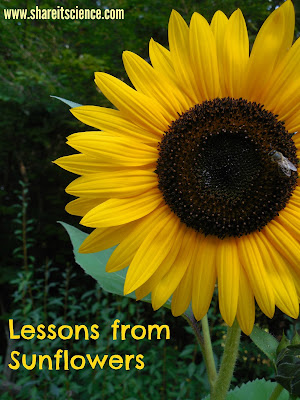While you can create these suncatchers any time of year, this can be a wonderful indoor activity in the winter. All you need is a window to sit by and a view of some deciduous trees! You will love this STEAM project as it leads to all sorts of curiosities and wonder about patterns in nature.
This post contains affiliate links, meaning I receive a small commission from purchases made through these links at no additional cost to you. Please see disclosures for more information.
What is a fractal?
Let's combine science, math and art with a nature inspired STEAM project. Fractals are fascinating mathematical patterns that are never-ending. They repeat and are similar regardless of scale. In other words, a small part of the whole looks just like the whole. These patterns create beautiful images that can be constructed by humans, but are also prevalent in nature.
One common example of a fractal is the Sierpinski triangle, where the triangle shape repeats and is the same whether you are looking at just one of the smaller triangles, or the large triangle.
Fractal patterns are found throughout the natural world. From fern fronds and planetary rings, to lightning and tree branches, nature is full of these beautiful patterns. Here are some examples:
One common example of a fractal is the Sierpinski triangle, where the triangle shape repeats and is the same whether you are looking at just one of the smaller triangles, or the large triangle.
 |
| Sierpinski Triangle (image: public domain) |
Fractal patterns are found throughout the natural world. From fern fronds and planetary rings, to lightning and tree branches, nature is full of these beautiful patterns. Here are some examples:
 |
| Frost fractals |
 |
| Romanesco Brocolli Fractals (image by Jon Sullivan, public domain) |
Create a Fractal Suncatcher
You can go out and find fractals too! We went on a fractal scavenger hunt and then made a pretty suncatcher with one of the patterns we found.
To do this project you'll need:
First, head outside to see what sort of fractal patterns you can find! Remember, they are the same at all scales, so you could find large or small examples. With the leaves gone from the trees it is easy to see the branching patterns:
To do this project you'll need:
- device that takes digital photos (or the internet)
- printer
- tracing paper
- colored pencils or markers
- dark colored card stock
First, head outside to see what sort of fractal patterns you can find! Remember, they are the same at all scales, so you could find large or small examples. With the leaves gone from the trees it is easy to see the branching patterns:
 |
| Fractals in the branching of a tree. |
Snap some photos of the fractal patterns you find.
 |
| Fractals in the branching pattern of flowers. |
Once you're back indoors, you'll print out your favorite images and trace the patterns in any color or repeating scheme that you like onto your tracing paper.
If you are unable to go outside due to the weather, you can also print out fractal images from the internet. Check out these amazing examples of fractals in nature.
Once you are happy with your fractal design, create a frame with the dark card stock to complete your suncatcher. Hang it on the window to enjoy.
We were amazed at how much our suncatcher, which was a repeated pattern from one tree, looked like branching blood vessels in the human body. It is amazing that similar patterns are found in so many naturally occurring places.
More Fun Learning with Fractals
If you are interested in learning more about fractals, we highly recommend Mysterious Patterns: Finding Fractals in Nature by Sarah C. Campbell, and incredible images by her husband, Richard P. Campbell. I was lucky enough to hear Sarah speak about her book, and she is one of the most enthusiastic people I've ever heard talk about patterns in nature.
**Purchasing books from Bookshop is a great way to support this blog AND your local book sellers!**
**Purchasing books from Bookshop is a great way to support this blog AND your local book sellers!**
You might also be interested in another book by the Campbells, Growing Patterns: Fibonacci Numbers in Nature.
If you're looking for more great STEAM (Science, Technology, Engineering, Art and Math) activities, you won't want to miss the STEAM Kids e-book. Get it here, or read our review here.
The Golden Ratio in the Garden which is part of our Children's STEAM Festival series.
Lessons from Sunflowers
This post is part of the 28 Days of STEAM series on the Left Brain, Craft Brain blog. Check it out for tons of fun STEAM activities!
If you're looking for more great STEAM (Science, Technology, Engineering, Art and Math) activities, you won't want to miss the STEAM Kids e-book. Get it here, or read our review here.
More Math and Nature
The Golden Ratio in the Garden which is part of our Children's STEAM Festival series.
Lessons from Sunflowers
This post is part of the 28 Days of STEAM series on the Left Brain, Craft Brain blog. Check it out for tons of fun STEAM activities!










No comments:
New comments are not allowed.